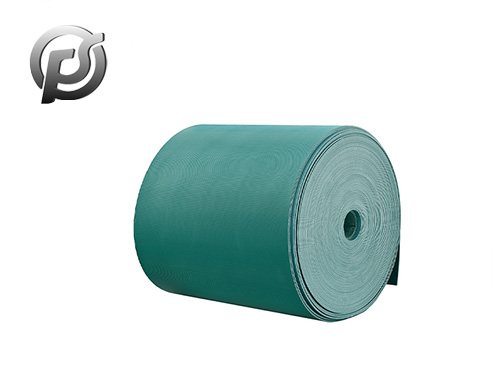1. In the turning section of a
belt conveyor, the smaller the distance between the bearing capacity and the return branch roller, the easier it will be to adjust and debug, and the more stable the conveyor belt will run. However, it should not be too dense, otherwise the resistance will increase, resulting in the increase of bending radius. According to experience, the spacing Z of load-bearing branch idlers is generally 0.75~1M, and the spacing of return branch idlers is 1.5~2m. Since the standard frame length of underground belt conveyor is generally a group of 3m, the frame needs to be modified in combination with the supporting Angle and the elevation Angle of inner curve y.
2. When the groove Angle is increased and the inner curve elevation Angle y is adopted in the turning section of the belt conveyor, there should be a transition section before and after the turning section. In the transition section, it is usually considered as =1m/=2m, and the elevation slope inside the frame is generally 5%~8%.
3. Because the measures taken at the bend of the belt conveyor are the installation support Angle and the elevation Angle of the inner curve y, the former is a necessary condition, and the latter depends on the situation, so the value is very important, usually =0.5°, the maximum is not more than 1°.
4. The axis of the belt conveyor bearing roller and the return roller set should be guaranteed to have a certain swing on the mounting frame. The plane bending belt conveyor is a natural turning belt conveyor designed according to the principle of mechanical balance, with simple structure, easy to maintain, adapt to and bend the roadway, reduce the transfer point and improve the safety factor. It is a kind of new and efficient transportation equipment suitable for the actual situation of underground mine, and has broad prospects for development.
 Optimizing Operations with PE Conveyor Belts: Durability, Efficiency, and Versatility
Optimizing Operations with PE Conveyor Belts: Durability, Efficiency, and Versatility
 Exploring the Efficiency and Versatility of Light Conveyor Belts
Exploring the Efficiency and Versatility of Light Conveyor Belts
 Polyester Conveyor Belts: Enhancing Efficiency and Reliability in Material Handling
Polyester Conveyor Belts: Enhancing Efficiency and Reliability in Material Handling